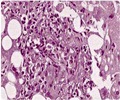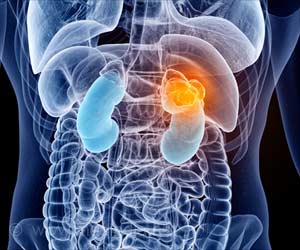A study in the March 23/30 issue of JAMA says that patients admitted to a hospital with major trauma and treated with the steroid hydrocortisone were less likely to be diagnosed with pneumonia

Antoine Roquilly, M.D., of the University of Nantes, France, and colleagues conducted the HYPOLYTE (Hydrocortisone Polytraumatise) study to examine whether treatment with stress-dose levels of hydrocortisone would reduce the prevalence of hospital-acquired pneumonia. The randomized trial, conducted from November 2006 to August 2009, included 150 patients with severe trauma from 7 ICUs in France. Patients were randomly assigned to a continuous intravenous infusion of either hydrocortisone (200 mg/d for 5 days, followed by 100 mg on day 6 and 50 mg on day 7) or placebo. The treatment was stopped if patients had an appropriate adrenal response.
Twenty-six of 73 patients (35.6 percent) treated with hydrocortisone and 39 of 76 patients (51.3 percent) treated with placebo developed hospital-acquired pneumonia at day 28 of hospitalization. Twenty of 56 patients with corticosteroid insufficiency (35.7 percent) who were treated with hydrocortisone and 31 of 57 patients (54.4 percent) receiving placebo developed hospital-acquired pneumonia at day 28.
The average duration of mechanical ventilation-free days was 16 days in the hydrocortisone group and 12 days in the placebo group. Three of 73 patients (4.1 percent) in the hydrocortisone group and 11 of 76 patients (14.5 percent) in the placebo group developed acute lung injury or acute respiratory distress syndrome (ARDS). The average length of ICU stay was 18 days in the hydrocortisone group and 24 days in the placebo group.
Seven of 76 patients (9.2 percent) in the placebo group and none of the 73 in the hydrocortisone group developed hyponatremia (low concentration of sodium in the blood). For the entire study population, 6 of 73 patients (8.2 percent) died in the hydrocortisone group and 4 of 76 (5.3 percent) died in the placebo group.
"In conclusion, a stress dose of hydrocortisone for 7 days is associated with a reduction in the rate of hospital-acquired pneumonia at day 28 together with a decreased requirement for mechanical ventilation and length of ICU stay in trauma patients. The effects and safety of corticosteroid therapy with stress-dose levels of hydrocortisone should be confirmed in trauma patients and investigated in other ICU populations, particularly in TBI patients," the authors write.
Advertisement
Editor''s Note: Please see the article for additional information, including other authors, author contributions and affiliations, financial disclosures, funding and support, etc.
Advertisement
In an accompanying editorial, Eileen M. Bulger, M.D., and Joseph Cuschieri, M.D., of the University of Washington, Seattle, comment on the findings of this study.
"In summary, the well-designed HYPOLYTE study suggests a potential benefit of early steroid administration for severely injured patients with corticosteroid insufficiency, but before changing clinical practice, a larger study is needed to define the effects of steroid use on mortality. In addition, a better understanding of the true incidence of corticosteroid insufficiency and the mechanism of manipulation of the immune-inflammatory response after injury would better guide this therapeutic approach."
(JAMA. 2011;305[12]1242-1243. Available pre-embargo to the media at www.jamamedia.org)
Editor''s Note: Please see the article for additional information, including financial disclosures, funding and support, etc.
Source-Newswise














